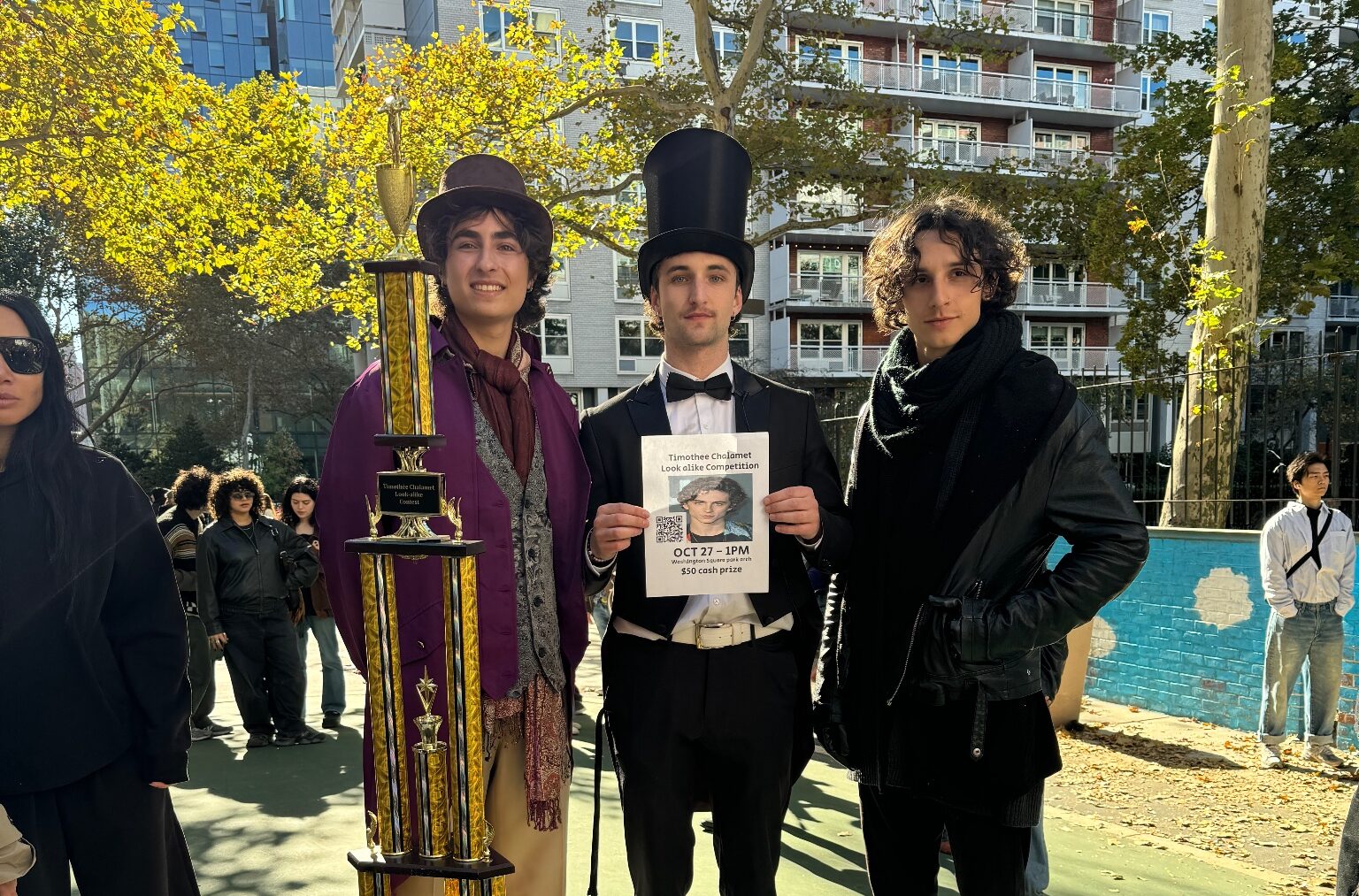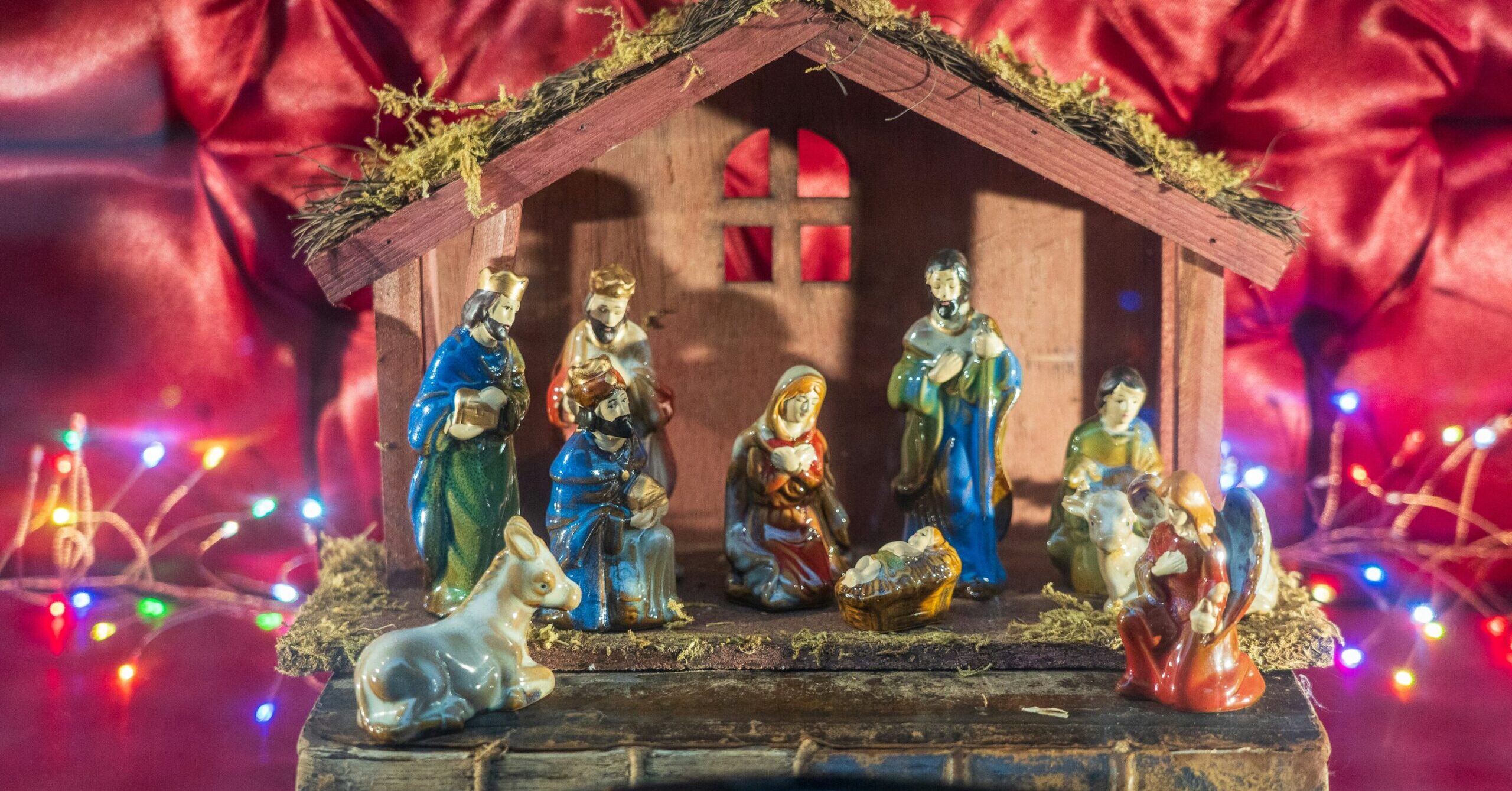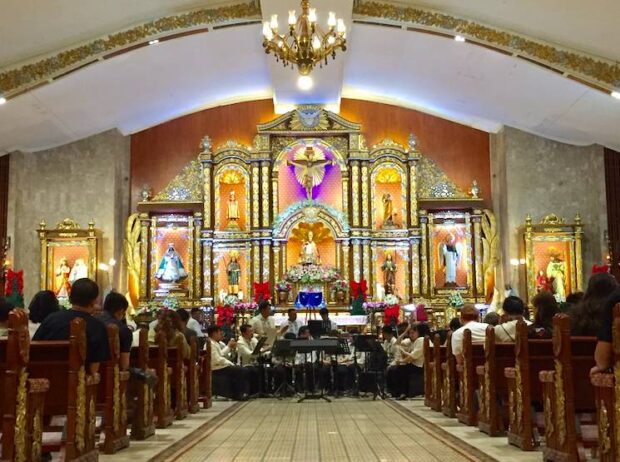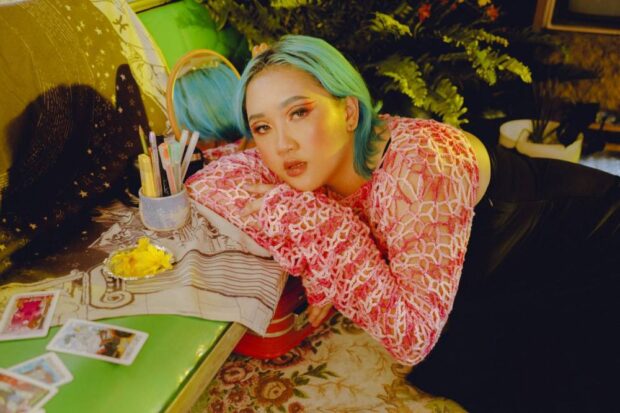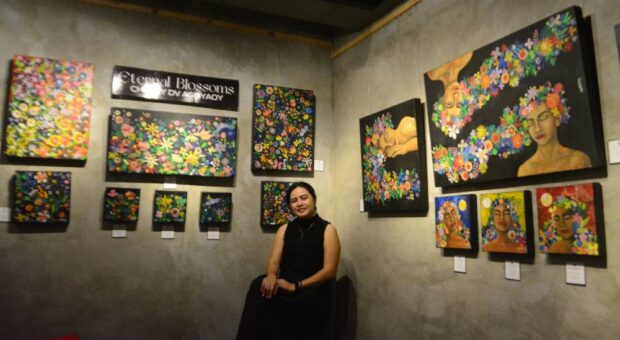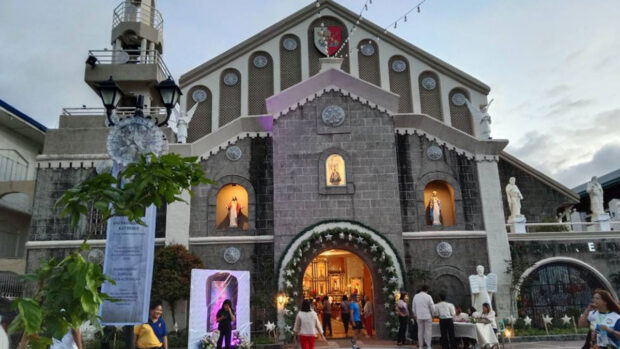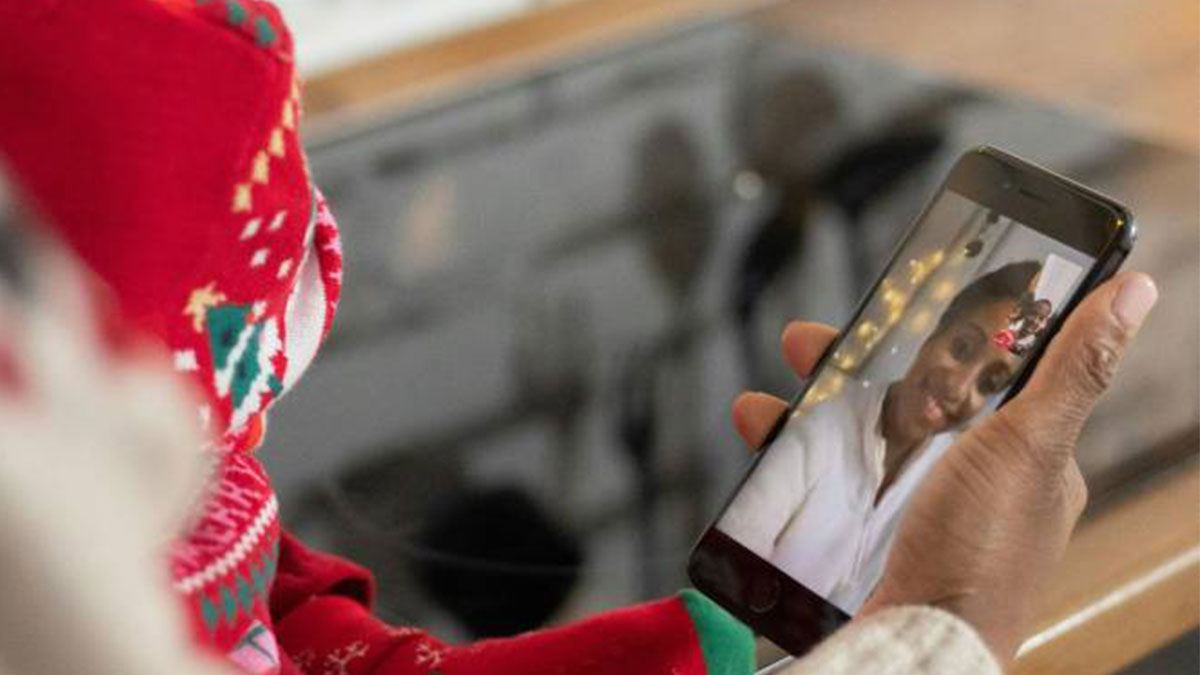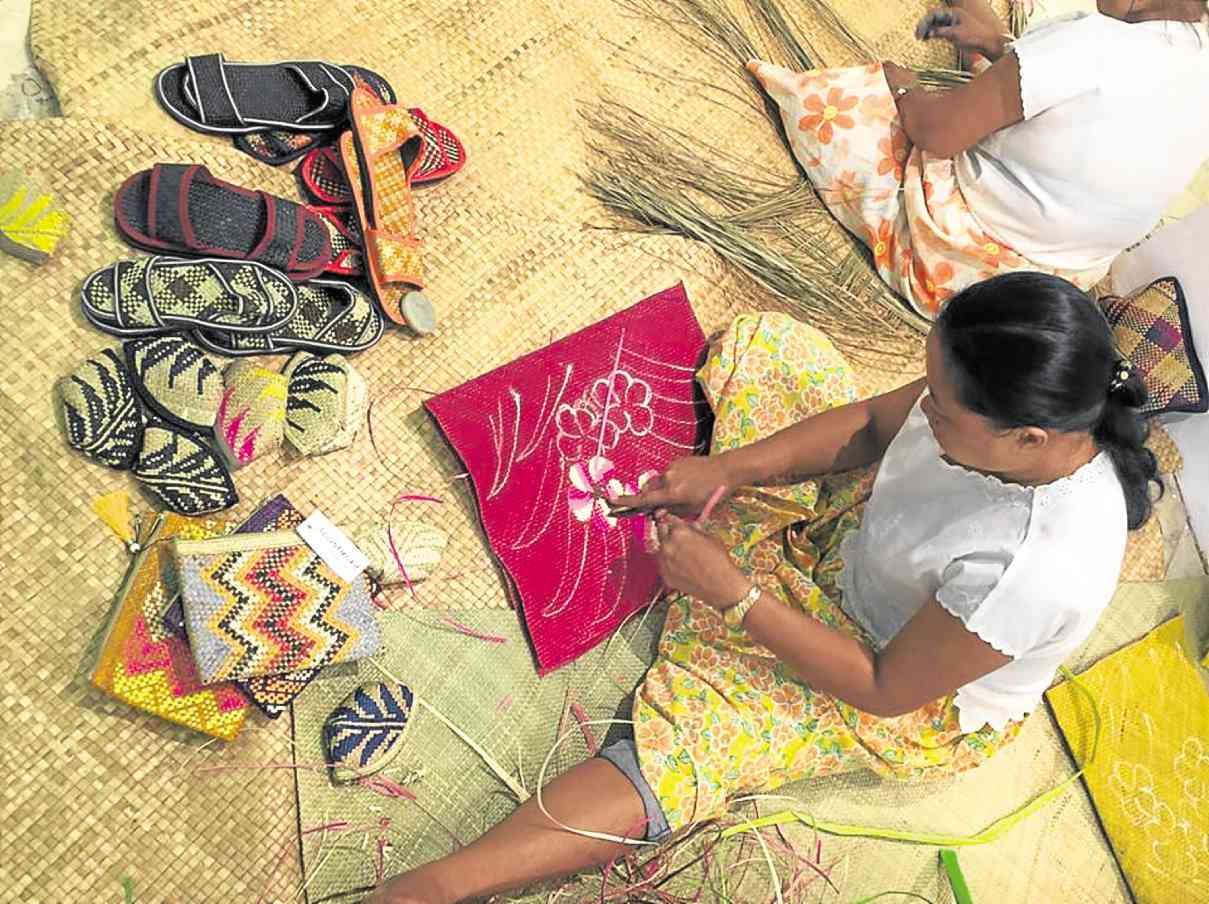
Gaddang weaver Carina Amsiwen sat on the floor as she prepared the threads on the warp frame and set every single piece on the loom.
This method would determine the striped pattern similar of her cotton twill costume from her hometown in Paracelis, Mountain Province.
In another corner, craftswoman Diosdada Sandoval braided tikog or wild reed stems to produce a mat, while Mercy Ampatin embroidered flowers on a pink patch. Their province, Basey in Western Samar, is home to colorful mats.
In yet another section, Bagobo-Tagabawa weavers Mayla Daug and Arlene Salazar painstakingly stitched minute crosses and beads, showing highly developed standards of ethnic embroidery.
For the first time in cultural history, the National Commission of Culture and the Arts (NCCA) has made its presence felt in a high-end retail establishment, Rustan’s Makati.
“Dayaw: Culture and Art Exhibition” is an initiative of Sen. Loren Legarda, a strong supporter of the arts and indigenous culture. She proposed the event to Rustan’s chair and arts patroness Zenaida Tantoco.
“Not many people in the ABC crowd know that these things exist. There was no initiative in the past. They are not aware of how rich the country is. The Indigenous People (IP) deserve the best possible venue,” said NCCA chair Felipe de Leon Jr.
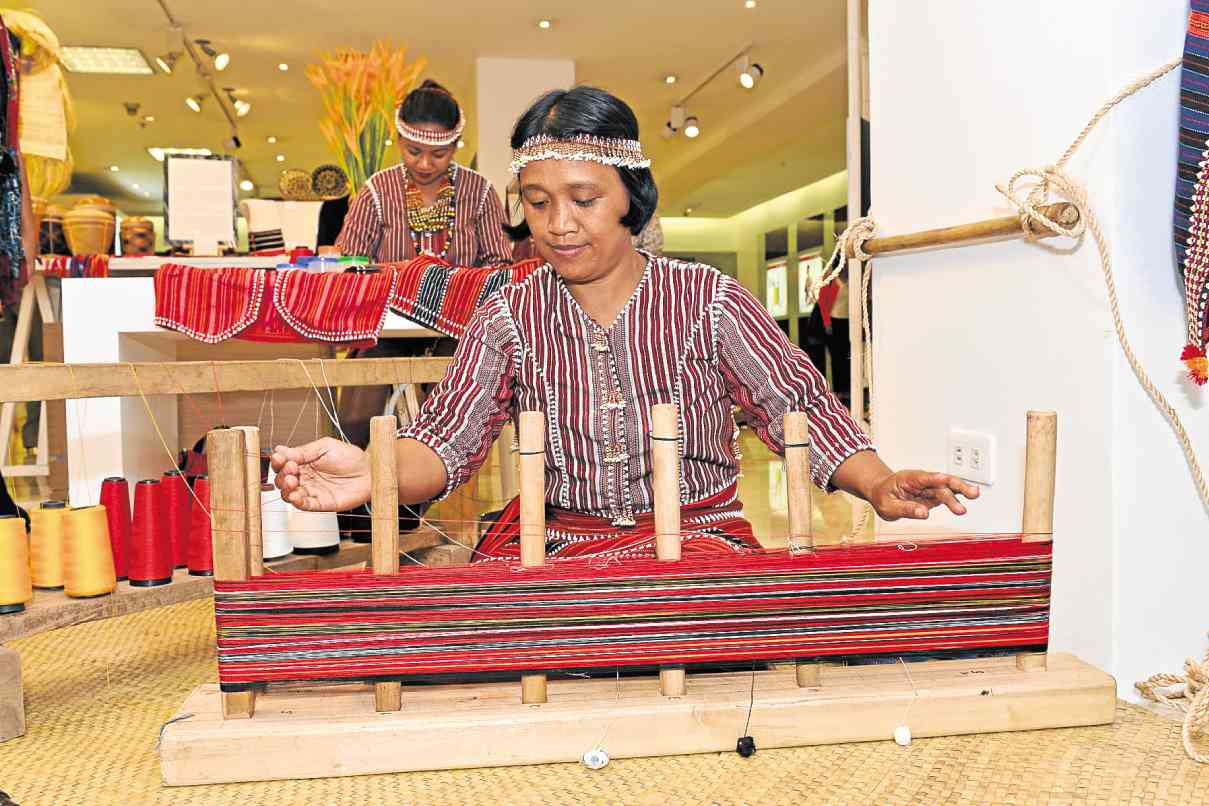
Shot in the arm
The event, which runs until today, includes demonstrations in tribal weaving, indigenous crafts alongside Rustan’s Our Very Own, the brand of contemporary local fashion and accessories.
The lakub, a Maranaw tobacco container, is painted in vivid geometric patterns and can be used to store gewgaws. Gourd hats, bows and arrows, woven backpacks, loincloths and headdresses share the limelight with mat-woven tote bags and purses, woven storage boxes, images of paintings by National Artist BenCab on fans, mugs and pillow covers and local artisan chocolates.
Legarda has given the country’s cultural life more than a shot in the arm. On the legislative side, she authored the Philippine Tropical Fabrics Law, which aimed to stimulate production of natural fabrics by encouraging government officials and employees to use them for uniforms.
She batted for the Gamaba, the equivalent of the National Artist award, given artists who contribute to our heritage.
Her office has been very prolific in promoting traditional fabrics, from setting up Hibla, the country’s first permanent textile gallery at the National Museum, to organizing lectures and demonstrations with experts and tribal artisans.
With a heart for the Indigenous People (IP), she spearheaded the permanent exhibit of the Manlilikha ng Bayan (National Living Treasures), artisans who have preserved traditional crafts. Moreover, her office has funded some 400 students to study at the School of Living Traditions, a program where one learns a traditional art or craft from a master.
“Since I chair the committee of finance, I get support for the budget. We brainstorm, reach out to the IPs, provide amenities and the outlets where they can show their products,” she says. “If we don’t become stewards for our culture, who else will?”
Live exhibits will be held today, 1-5 p.m. at Rustan’s Makati and Rustan’s Shangri-La. The arts exhibit will be seen this month at Rustan’s Makati, Shangri-La, Alabang Town Center and Cebu.


